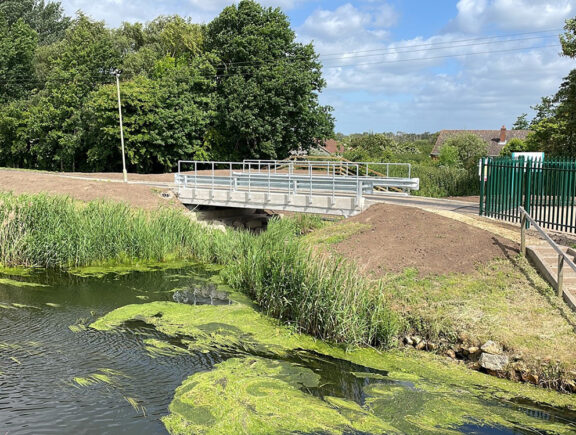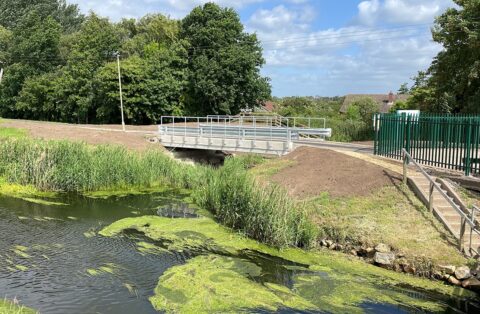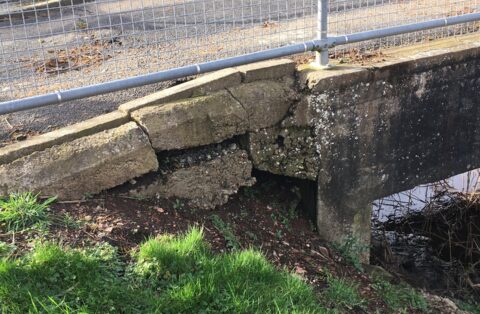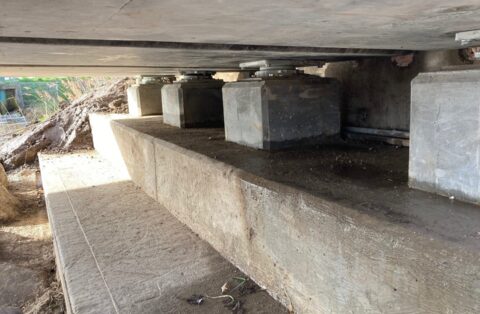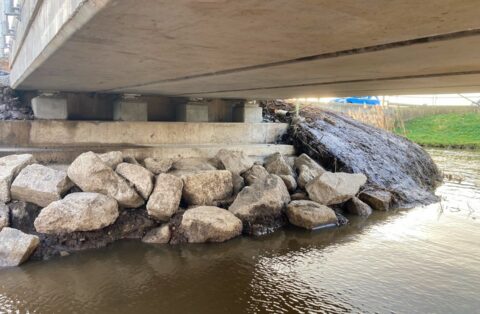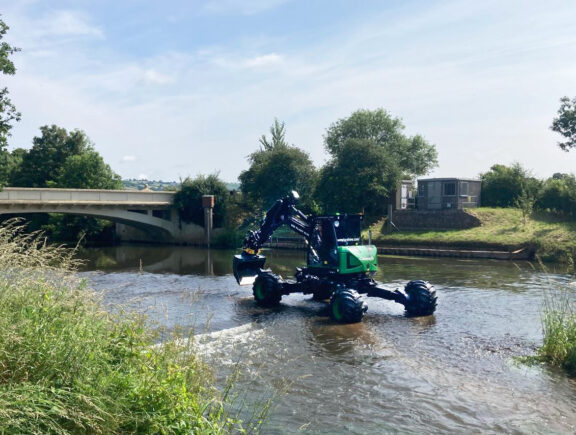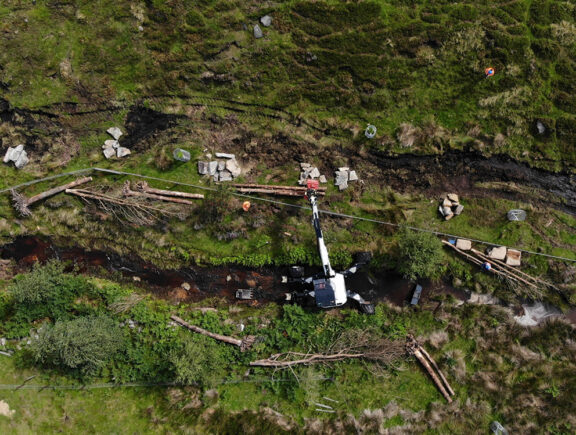Stonbury was provided a brief to demolish the existing structure and deliver a bridge that would support the required weight and size of the necessary plant and equipment that require access to upgrade the pumping station in the coming months.
The bridge was to be located over and parallel to a live watercourse and adjacent to a busy highway and road junction. In addition, there were live overhead cables over the location of the bridge, so it was not possible to employ a crane to lift bridge components into place.
Taking account of the access constraints, a design was drawn by Mason Clark Associates, and Stonbury’s specialist bridge-builder orchestrated a safe method of working with members of Stonbury’s designated Health and Safety team.
The final design consisted of a bridge 4 metres wide, spanning 8.5 metres with a 40-tonne rating. The design specified new abutments to provide the clearances required for a 600mm x 500mm otter pass, bearing plinths, and adequate access for annual inspections.
To begin construction, Stonbury segregated the watercourse using ballast ton bags and installed Terram to protect the remaining watercourse during demolition of the previous bridge.
New abutments on each bank side were constructed with timber formwork and cast concrete, along with steel rebar and concrete bearing plinths. Precast bridge deck sections were then manoeuvred into place using a 30t excavator as a lifting plant, and over-cast with concrete onsite.
To protect the new abutments from future erosion, aggregates from the demolished abutments were recycled to form riprap, negating the requirement for imported stone. Remaining ton-bagged aggregates were returned to the Environment Agency for reuse so negligible waste was retrieved from the project, which met their high standards for environmental protection and sustainability.
Finally, to complete the bridge upstands, Armco barriers and handrails were installed, and the bridge deck was waterproofed before asphalt delivery. The dam was removed and new curbing to the approaches were fitted. Environment Agency-approved fencing and gates were reinstated to return the site to use. The Environment Agency were delighted at the result.
